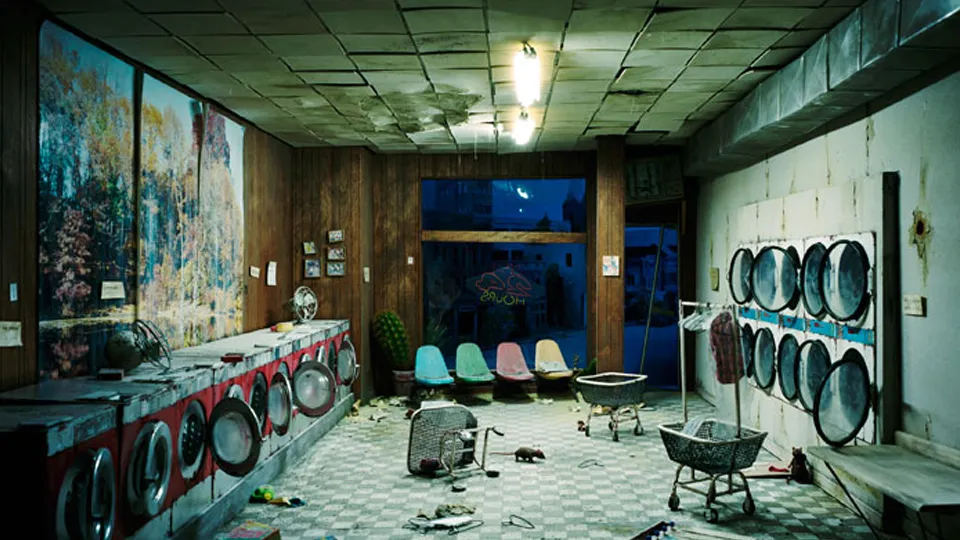The fashion industry stands at a crossroads where sustainability meets innovation, driven by the urgent need to transform industrial waste into wearable art. 🌍
For decades, the textile sector has been notorious for its environmental footprint, consuming vast amounts of water, chemicals, and energy while generating mountains of waste. However, a new wave of material scientists, fashion designers, and sustainability pioneers are rewriting this narrative by converting industrial byproducts into high-performance, stylish fabrics that challenge everything we thought we knew about fashion manufacturing.
The concept of circular fashion isn’t just a trendy buzzword anymore—it’s becoming a fundamental business strategy for brands that want to survive in an increasingly eco-conscious marketplace. From coffee grounds transformed into waterproof coats to plastic bottles reimagined as luxury activewear, the possibilities seem endless when creativity meets environmental responsibility.
The Hidden Goldmine: Understanding Industrial Byproducts ♻️
Industrial byproducts are materials generated as secondary outputs during manufacturing processes. Traditionally viewed as waste requiring costly disposal, these materials are now being recognized as valuable resources waiting to be reimagined. The fashion industry has begun tapping into byproducts from diverse sectors including agriculture, food processing, petrochemical refinement, and even the fashion industry itself.
Agricultural waste such as pineapple leaves, banana stems, and orange peels contain cellulose fibers that can be extracted and processed into textile materials. Food industry byproducts like coffee grounds, grape skins from wine production, and discarded fruit peels offer both functional properties and unique aesthetic qualities. Meanwhile, industrial waste from plastic manufacturing, fishing nets, and rubber production provides synthetic alternatives that can rival virgin materials in quality and durability.
The transformation of these byproducts requires sophisticated processing techniques that maintain material integrity while ensuring safety standards for skin contact and long-term wear. Innovative companies are investing heavily in research and development to perfect these conversion processes, creating scalable solutions that make economic sense alongside their environmental benefits.
From Coffee Shops to Catwalks: Plant-Based Textile Innovations
One of the most exciting frontiers in sustainable textiles involves extracting value from agricultural and food processing waste. Piñatex, a leather alternative made from pineapple leaf fibers, has gained significant traction among major fashion brands seeking cruelty-free and sustainable materials. This innovative textile utilizes waste from pineapple harvests that would otherwise be burned or left to decompose, transforming it into a versatile material suitable for shoes, bags, and upholstery.
Coffee grounds, produced in astronomical quantities by the global coffee industry, are being ingeniously repurposed into functional fabrics with natural odor-control properties. The oils naturally present in coffee provide moisture-wicking capabilities and UV protection, making these textiles particularly suitable for activewear and outdoor clothing. Several brands have successfully launched collections featuring coffee-based fabrics that perform comparably to synthetic athletic wear while offering a completely sustainable alternative.
Orange fiber represents another breakthrough innovation, utilizing the citrus waste from juice production. Italy alone generates over 700,000 tons of citrus waste annually, much of which can be transformed into silky, lustrous fabrics resembling traditional silk. The cellulose extracted from orange peels can be spun into yarns that accept dye beautifully and drape elegantly, appealing to high-fashion designers seeking sustainable luxury materials.
Mushroom Magic: Mycelium-Based Materials 🍄
Mycelium, the root structure of mushrooms, has emerged as one of the most promising bio-based materials for fashion applications. Companies are cultivating mycelium using agricultural waste as a growth medium, allowing the fungal network to bind organic matter into dense, leather-like sheets. This process takes just weeks compared to the years required to raise cattle for traditional leather, dramatically reducing environmental impact while creating a material that’s biodegradable at end-of-life.
The versatility of mycelium-based materials extends beyond simple leather alternatives. Researchers are experimenting with different growth conditions, substrates, and post-processing treatments to create materials with varying textures, thicknesses, and functional properties. Some mycelium textiles offer natural water resistance, while others can be engineered for breathability or insulation, opening possibilities for applications across all fashion categories.
Ocean Waste Transformed: Marine-Derived Textiles 🌊
The world’s oceans have become unintended repositories for plastic waste, with devastating consequences for marine ecosystems. Forward-thinking textile companies are tackling this crisis by developing technologies to harvest ocean plastics and transform them into high-quality fabrics. Recycled ocean plastic can be processed into polyester fibers that match virgin polyester in performance while giving new life to materials that would otherwise persist in the environment for centuries.
Fishing nets represent a particularly problematic form of marine pollution, often abandoned or lost at sea where they continue trapping wildlife in a phenomenon known as “ghost fishing.” Several innovative programs now collect discarded fishing nets, clean and process them, and regenerate the nylon into premium textile fibers. These regenerated materials maintain the strength and durability characteristics that made nylon popular for activewear and swimwear, proving that sustainable doesn’t mean sacrificing quality.
Beyond plastics, researchers are exploring textiles derived from algae and seaweed, fast-growing marine organisms that require no freshwater, pesticides, or arable land. Algae-based fibers can be blended with conventional materials or used independently, offering biodegradability and a closed-loop production system where cultivation actually benefits marine environments by absorbing excess nutrients.
Industrial Waste Reimagined: Synthetic Material Innovation
The petrochemical industry generates substantial waste streams during refining and manufacturing processes. While reducing dependency on fossil fuels remains an ultimate goal, transitioning existing waste into valuable textiles represents an important interim strategy. Some companies are capturing waste gases from industrial processes and converting them into polymers suitable for textile production, effectively preventing greenhouse gas emissions while creating new materials.
Rubber manufacturing produces significant amounts of offcuts and rejected materials. These rubber byproducts can be ground, processed, and integrated into composite textiles that offer unique properties like enhanced durability, weather resistance, and flexibility. Fashion designers are incorporating these materials into footwear, outerwear, and accessories, celebrating the industrial aesthetic while promoting resource efficiency.
The textile industry itself generates considerable waste through production offcuts, rejected fabrics, and post-consumer garments. Mechanical and chemical recycling technologies are advancing rapidly, enabling these textile wastes to be broken down and regenerated into new fibers. Closed-loop recycling systems allow brands to take back worn garments, process them, and create new products, fundamentally challenging the linear take-make-dispose model that has dominated fashion for generations.
Smart Processing: Technology Enabling Transformation ⚙️
The conversion of industrial byproducts into fashion textiles requires sophisticated technologies that didn’t exist even a decade ago. Advanced separation techniques isolate valuable components from complex waste streams. Enzymatic treatments break down materials at the molecular level without harsh chemicals. Bioengineering creates microorganisms capable of producing textile fibers or processing waste materials more efficiently than conventional methods.
Digital technologies are also playing crucial roles in optimizing these conversion processes. Artificial intelligence algorithms analyze material properties and predict optimal processing parameters. Blockchain systems track materials from source through manufacturing, ensuring transparency and authenticating sustainability claims. These technological advances make byproduct-based textiles increasingly viable at commercial scale, moving them from niche experiments to mainstream possibilities.
Performance Meets Sustainability: Quality Without Compromise
A common misconception suggests that sustainable materials necessarily sacrifice performance, aesthetics, or durability. However, modern byproduct-based textiles frequently match or exceed conventional materials across key metrics. Coffee-based fabrics offer odor resistance that synthetic materials struggle to replicate. Recycled ocean plastic polyester performs identically to virgin polyester in strength tests. Mycelium leather provides breathability that synthetic alternatives lack.
Testing protocols for these innovative materials have become increasingly rigorous, ensuring they meet industry standards for colorfastness, abrasion resistance, dimensional stability, and safety. Third-party certifications like Oeko-Tex, Cradle to Cradle, and Global Recycled Standard provide independent verification of environmental claims and material quality, building consumer confidence in byproduct-based textiles.
Fashion designers working with these materials report that the unique characteristics of byproduct textiles often inspire creativity rather than constraining it. The natural color variations in materials like orange fiber or the distinctive textures of mycelium leather encourage designers to embrace imperfection and celebrate the material’s origins, creating garments with authentic stories that resonate with conscious consumers.
Economic Viability: Making the Business Case 💰
For byproduct-based textiles to truly revolutionize fashion, they must make economic sense alongside their environmental benefits. The cost equation involves multiple factors: waste material acquisition, processing and conversion expenses, scale of production, and market demand. In many cases, industrial byproducts are available at low or even negative cost, as waste generators pay for disposal. This provides a significant advantage over virgin materials that require resource extraction and primary processing.
However, conversion technologies often require substantial capital investment, and smaller production volumes initially result in higher per-unit costs. As technologies mature and production scales increase, economies of scale drive costs downward. Several byproduct-based textiles have already achieved price parity with conventional alternatives, while others remain premium-priced, appealing to segments willing to pay more for sustainability.
Government incentives, carbon pricing mechanisms, and regulatory pressures are improving the economic landscape for sustainable textiles. Extended producer responsibility legislation makes brands financially accountable for end-of-life garment disposal, encouraging investment in recyclable and byproduct-based materials. Tax incentives for waste utilization and circular economy practices further enhance the business case for innovation.
Brand Positioning and Consumer Demand 🛍️
Consumer awareness of fashion’s environmental impact has grown dramatically, with younger demographics particularly motivated to support sustainable brands. Textiles made from industrial byproducts offer powerful storytelling opportunities that resonate with these conscious consumers. A jacket made from ocean plastic carries an immediate, tangible environmental benefit that shoppers can understand and value.
Leading fashion brands are incorporating byproduct-based materials into their collections not just for environmental reasons but as strategic brand positioning. Sustainability credentials influence brand perception, customer loyalty, and ability to attract top talent. Companies viewed as sustainability leaders often command premium pricing and experience stronger growth than conventional competitors.
However, brands must navigate potential “greenwashing” accusations by ensuring genuine commitment to sustainability across their operations. Transparency about material sourcing, honest communication about both benefits and limitations, and third-party certifications help establish credibility with increasingly skeptical consumers who demand authenticity.
Challenges and Opportunities on the Horizon
Despite tremendous progress, significant challenges remain in scaling byproduct-based textiles to meet global fashion demand. Supply chain logistics can be complex when sourcing diverse waste materials from multiple industries. Quality consistency presents ongoing challenges, as natural variations in agricultural waste or contamination in post-consumer materials affect final textile properties. Processing technologies continue evolving, requiring ongoing research investment and refinement.
Regulatory frameworks haven’t always kept pace with innovation, creating uncertainty around material safety approvals and labeling requirements. International variations in regulations complicate global scaling for companies developing these textiles. Industry collaboration on standards development helps address these barriers, but progress requires time and sustained effort from multiple stakeholders.
The opportunities, however, far outweigh these challenges. The global textile market represents hundreds of billions of dollars annually, and even capturing a small percentage with byproduct-based alternatives would represent massive environmental gains. Cross-industry collaboration opens new business models where waste from one sector becomes valuable feedstock for another, creating economic value while solving disposal problems.
Future Innovations: What’s Coming Next? 🚀
The pipeline of emerging innovations suggests even more exciting developments ahead. Researchers are exploring bacterial cellulose production using industrial wastewater, creating textiles while simultaneously treating contaminated water. Others are developing hybrid materials that combine multiple byproducts, leveraging the strengths of each component to create textiles with unprecedented properties.
Advances in biotechnology promise designer microorganisms engineered to produce specific textile fibers with predetermined characteristics, using waste streams as their energy source. Nanotechnology applications could enhance byproduct-based textiles with properties like stain resistance, antimicrobial action, or even color-changing capabilities, all while maintaining sustainability credentials.
The integration of digital manufacturing techniques like 3D knitting and on-demand production with byproduct-based materials could revolutionize how garments are made, eliminating waste from cutting and enabling mass customization. This convergence of sustainable materials and advanced manufacturing represents fashion’s possible future—responsive, personalized, and environmentally regenerative.
Wearing Change: The Path Forward for Fashion 👗
The transformation of industrial byproducts into fashionable textiles represents more than technological achievement—it embodies a fundamental shift in how we conceptualize resources, waste, and value. Every coffee ground, plastic bottle, or pineapple leaf converted into wearable material challenges the linear extraction economy that has dominated industrial production since the Industrial Revolution.
Fashion brands embracing these innovations aren’t just responding to market pressures or regulatory requirements; they’re positioning themselves at the forefront of a necessary global transition toward circular economies. The companies investing in byproduct-based textiles today are building competitive advantages that will only strengthen as environmental constraints tighten and conscious consumption becomes mainstream.
For consumers, choosing garments made from transformed waste materials represents a tangible way to participate in environmental solutions. Each purchase sends market signals encouraging more innovation and investment in sustainable alternatives. As these materials become more widely available and affordable, the cumulative impact of millions of conscious choices could genuinely transform the industry.
The revolution in textile innovation from industrial byproducts demonstrates that sustainability and style need not be opposing forces. Instead, they can reinforce each other, creating fashion that’s not only beautiful and functional but also part of the solution to pressing environmental challenges. This is fashion reimagined—where waste becomes wonder, and every garment tells a story of transformation and possibility.
Toni Santos is a visual explorer and microscopic storyteller who delves into the hidden aesthetics of microbial life. Through a fusion of scientific curiosity and artistic insight, Toni transforms the overlooked world of bacteria, fungi, and cellular forms into mesmerizing visual narratives—revealing the elegance, symmetry, and chaos that thrive at microscopic scales.
Rooted in a fascination with life forms too small to see yet too intricate to ignore, Toni’s work captures the bizarre beauty of microbial colonies, biofilms, and spore patterns. These images aren’t just representations—they are celebrations of the artistic intelligence encoded in nature’s tiniest architects.
With a background in visual design and bio-inspiration, Toni merges scientific imaging techniques with creative expression, transforming petri dish cultures, fluorescence microscopy, and microbial textures into works that provoke both wonder and contemplation.
As the creative force behind Vizovex, Toni offers curated visual studies, microbial-inspired designs, and essays that bridge art and microbiology—inviting viewers to reimagine what beauty means at the edge of perception.
His work is a tribute to:
The hidden geometries of living systems
The surprising elegance of microbial growth
The role of micro-life in shaping visual culture
Whether you’re a scientist, artist, or simply curious about the unseen world that sustains us, Toni opens a window into a universe where life writes poetry in colonies and patterns, one microbe, one frame, one breathtaking detail at a time.





